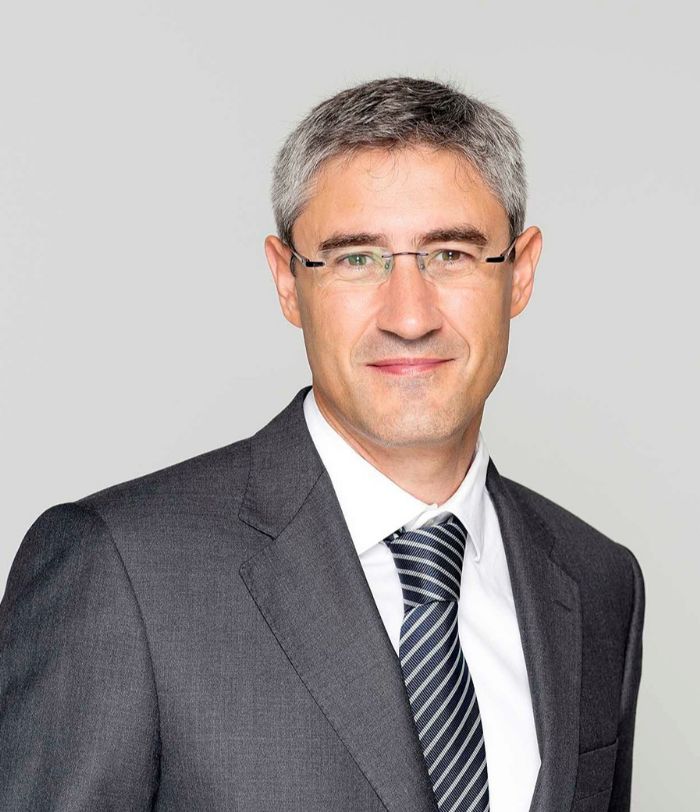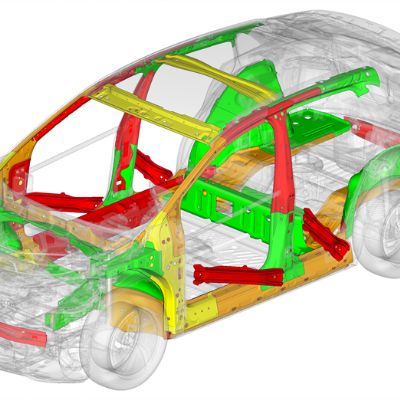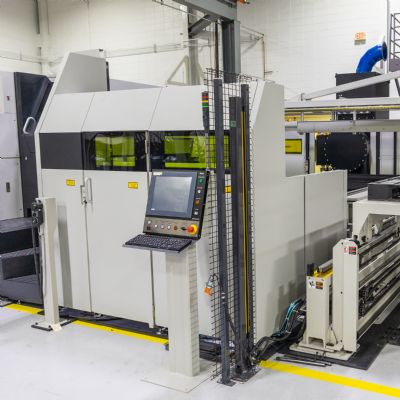“Binder jetting offers a unique economical value proposition because of efficiencies,” he continues, “as efficient and minimal post-processing removes labor costs. On top of this, metal AM, and metal binder jetting in particular, provides freedom of design that allows for a vast variety of parts. So, it's much easier to find compelling cases. Because metal binder jetting provides better throughput and lower running costs than other AM processes, due to the need for less melting and the use of lower-cost materials—a third to a fifth of the cost for binder jetting materials than for AM powders—the potential to scale is much greater than with laser powder-bed fusion and other processes.”
More Materials, More Opportunities
The advantages of metal binder jetting in certain cases already are paying dividends, with Volkswagen recently announcing that the company has begun producing A-pillar parts for its T-Roc vehicle platform via HP’s Metal Jet printers. This reportedly is the first instance of an automaker employing metal binder jetting to produce production parts. And, with the volume capabilities of binder jetting making it uniquely suited for automotive, HP plans on growing its metal-alloy portfolio to pursue other functional, structural vehicle applications as well as work in other industries.
“We’re working with GKN and other material partners on material qualification,” Pastor says. “We work with 316L and 17-4 stainless steels, and extending qualifications to other materials in a family, once one material in that family is qualified, becomes a relatively simple process. Our materials partners can perform much work within a family, say stainless or tool steels, and we rapidly can qualify throughout those families…again, once we qualify one material.”
As stated, an expanded material portfolio brings additional
application opportunities. HP is working on additional part applications with
Volkswagen and other customers, Pastor reports, while noting that metal binder
jetting offers potential in fluid transfer applications for automotive,
industrial and other markets.
Spare parts represent another area where metal binder jetting can succeed, according to Pastor. HP has teamed with the U.S. Marine Corps on production of stainless-steel spare parts for its Amphibious Assault Vehicle (AAV) via the Metal Jet. The ability to 3D print required parts typically unavailable in the traditional supply chain helps keep the nearly 40-yr.-old vehicle operational—the replacement window for the AAV fleet remains at least a decade away.
“With the important focus on sustainability, many organizations are looking at ways to reduce inventory and costs, and extend the life of products,” says Pastor, offering reasons for the spare-part trend. “Perhaps initial forecasts called for production of so many spare parts. If demand now is greater, going back to those original molds or tools may not be possible, making 3D printing an excellent alternative. Now, the challenge of qualifying the new 3D-printed spare parts is another trend.”
Sustainability Among Other Trends
Speaking of sustainability, HP has published its own sustainability goals extending decades ahead, with a portion of these goals calling for using HP-printed parts in its own products. That’s already underway, according to Pastor, and provides an effective means not only to aid in sustainability, but to further develop binder jetting expertise and capability.
“How can we design a part that will take 90-percent less of a carbon footprint to manufacture, and take that lesson to all of our businesses and engineers?” Pastor asks. “Doing so can provide better, more economical designs and allow us to reconfigure supply chains, reduce transportation, etc.—all of this aids sustainability.”
Pastor, along with Didier Deltort, the incoming president of HP’s Personalization and 3D Printing business, and Guayente Sanmartin, the new global head and general manager of 3D Printing Multi Jet Fusion, responsible for HP’s plastics 3D printing organization, are based in Barcelona, Spain, home of the HP 3D Printing and Digital Manufacturing Center of Excellence, one of the largest and most advanced 3D printing and digital manufacturing R&D centers in the world, according to company officials, and also designed and built with sustainability in mind.
Specifically designed for collaboration across HP engineering and R&D groups, customers, and partners, the facility integrates flexible and interactive layouts, co-development environments, and fleets of the latest HP plastics and metals 3D production systems. In March 2020, the center reportedly became the first structure in Spain to achieve Gold-level Leadership in Energy and Environmental Design (LEED) certification, a significant milestone in the company’s commitment toward becoming fully sustainable.
Another trend that fits into the binder jetting wheelhouse: the blending of personalization with performance. For example, HP teamed with Cobra Golf on binder jetting, both plastic and metal, of golf-club parts with a number of performance-enhancing features.
The initial designs of parts for these clubs and the clubs themselves focus on maximizing performance, according to Pastor, and from there moving to personalization of the clubs for particular users while keeping the performance gains. The design freedom, and development and production speed of binder jetting offer unique advantages in the performance + personalization equation.
Another trend, miniaturization, provides the opportunity to
shrink current designs with embedded features to promote functionality, offers
Pastor. AM enables this trend while potentially removing steps in the
manufacturing process.
In the end, successful realization of the above-mentioned
trends relies on solid partnerships, where providers can assist customers in
designs that maximize all of the designed product characteristics in the most
efficient and cost-effective way possible.
“Part of design deals with the specific application, and for HP, part of design deals with Metal Jet technology,” Pastor says. “We know how to move from a customer’s design intent to an ideal finished product. That section in the middle between application-specific and Metal Jet-specific is what we are working on with GKN (a close metal material and part partner), for example, where GKN has this knowledge of application-specific design that complements our knowledge of design for Metal Jet.” 3DMP
See also: HP Inc., GKN Aerospace
Technologies:
 Recognizing similarities between plastic- and metal-AM platforms, as well as the key differences, provides a roadmap for Pastor moving forward as metal binder jetting in general, and HP’s efforts in particular, advance.
Recognizing similarities between plastic- and metal-AM platforms, as well as the key differences, provides a roadmap for Pastor moving forward as metal binder jetting in general, and HP’s efforts in particular, advance. 








